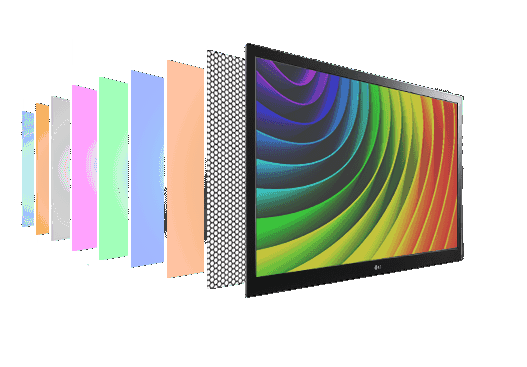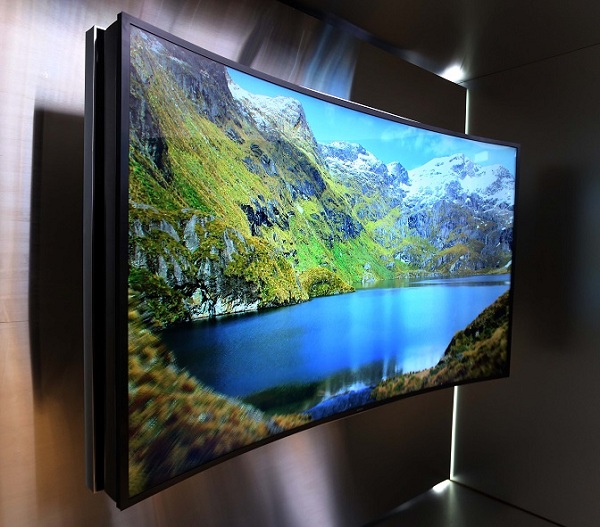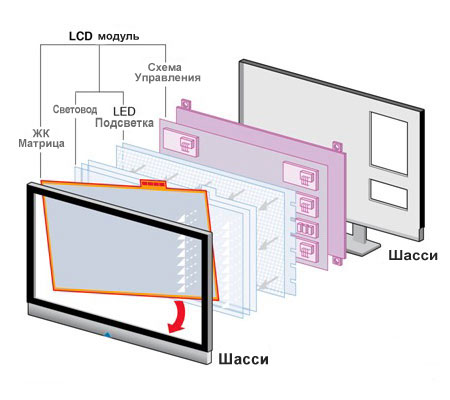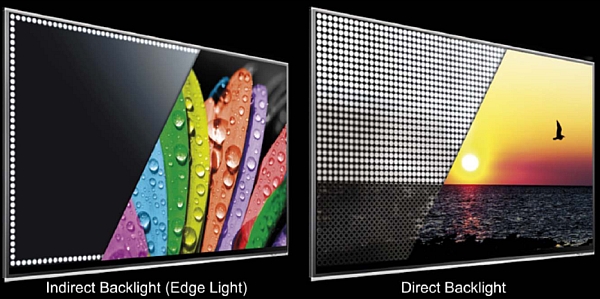Comparative characteristics of LCD and LED TVs
Choosing a modern TV, the buyer is faced with a large number of issues, including, and what is the difference between LCD and LED TVs. After all, at first glance, these flat telepanels are no different. And the technology used in them is the same - LCD matrixconsisting of two plates. Liquid crystals located between them, under the action of an electric current, like the shutter of a camera, let in or block light. Depending on the level of the applied voltage, an image is formed on the screen. However each type of TV has its own characteristics, allowing to determine which one is better.

Content
Modern TV features
Before proceeding to consider the advantages and disadvantages of these types of TVs, it is worth determining the value of modern television equipment.A variety of models allows you to meet different user needs. Today, TV act in various capacities.
- Home cinema. LCD and LED are ideal for watching high-definition video and popular HD and Full HD formats today. Any diagonal solutions, low weight, which allows mount the panel on the wall, a wide range of models, excellent image quality (color rendition, contrast) - all this refers to the types of TV under consideration.

- Game screen. According to statistics, more than 10 million Russian citizens are addicted to computer games, most of them are active gamers. Video game enjoyment requires the ability to connect the latest gaming consoles and consoles to the widescreen panel (find out how to connect xbox to tv), support for HD formats and 3D functions. The response speed of the matrix, the viewing angle and color rendition is also not in last place when choosing a TV for games.

- Design element. Recent advances and developments will help to complement the chosen interior style or become its highlight. Narrow telepanels, whose width can reach only a few millimeters, stylish curved displays, mirror screens, in which you can easily see your reflection - all this is present in modern TV models.

Before buying a TV, it’s first of all to decide what needs it should meet. If we consider the price criterion, the LCD models will be somewhat cheaper than similar LED TV. But is it worth saving in this case, and what is the difference between these TVs?
LCD TV features
As already noted, the basis of the LCD TV multilayer structure (glass plates with polarizing filters and a layer of liquid crystals). The light from the sources — in this case, thin cold cathode fluorescent lamps, which are located behind the matrix, passes through the LCD grid. It consists of a set of cells, each of which, depending on the voltage, transmits a different amount of light (polarization). Thus, thanks to a combination of primary colors (green, red and blue), a picture is formed on the screen.
The LCD grille needs a backlight, and that is where the LCD (LCD) and LED models differ.
When LCD TV appeared on the market, they immediately gained the trust of consumers.Their advantages over previous TVs were obvious:
- narrow TV panels that are easy to mount on a wall or ceiling with bracket;
- low power consumption (specific figures are given in the article on power consumption of various types of TV);
- no flicker and no static screen voltage;
- correct image geometry;
- Full HD resolution support.

Features of LED TVs
Thanks to the good work of marketers, ice technology positioned as innovative. Although, in fact, this is all just a kind of LCD TVs, which is different backlight. As sources of illumination are used more advanced in this regard, RGB LEDs. Today, LED TV is the most popular and popular models. They use two types of lights: Direct LED and Edge LED.
In the first case, the LEDs are located right behind the matrixlike lamps in LCD models. In the second, the backlight is located from the edges of the screen and evenly distributed due to the special scattering film. Depending on the diagonal, the LEDs can be installed both on one side and on two.In models with a large diagonal, the backlight can be installed around the perimeter.
Direct LED technology allows you to avoid side lights and use Local Dimming technology. At the same time, the side-type Edge LED is more energy efficient and allows you to create models less than a centimeter thick.

The main advantages of LED TVs:
- low weight and slim body;
- clear, contrasting picture, with rich color reproduction;
- volumetric and realistic image, without distortion;
- in premium models, the local dimming screen is used (Local Dimming), which greatly improves the picture quality.
LED TV can be considered an advanced type of LCD TVs. But in addition to the one used in the backlight devices, there are other differences.
What is the difference between LCD and LED
- In LED models, due to the absence of lamps, not used mercury. This makes them environmentally friendly and safe to dispose of.
- LED energy efficient lamps. According to statistics, such light sources can save up to 40% of the electricity that is used to operate TV.
- LCD TVs are not inferior to updated models. For example, they benefit from some low-cost LED devices.Due to the cheapening of technology, they have difficulties with diode control.
- Opportunity even distribution of LEDs it only gives the Direct LED backlight - these are the models that outperform conventional LCDs. Local dimming, which gives a certain advantage to LED models, with Edge technology is impossible.
- As for video games, both devices support modern game consoles and consoles.
- On the life of the LED also wins from the LCD, because fluorescent lamps in the process of service burn out faster. Thanks to RGB LEDs color accuracy LED lasts much longer.
What kind of TV is better? Of course, LED models benefit from the LCD. But the quality of the image depends not only on the type of illumination, it should not be a decisive factor. It is important to pay attention to screen resolution and additional technologies that affect the video signal. Therefore, some models of LCD TVs with CCFL lamps in the presence of a good video processor can easily compete with LED TV.

/rating_off.png)












